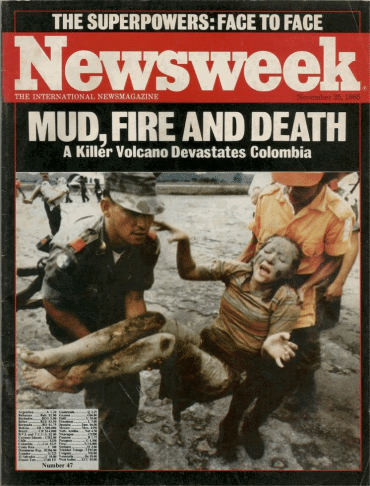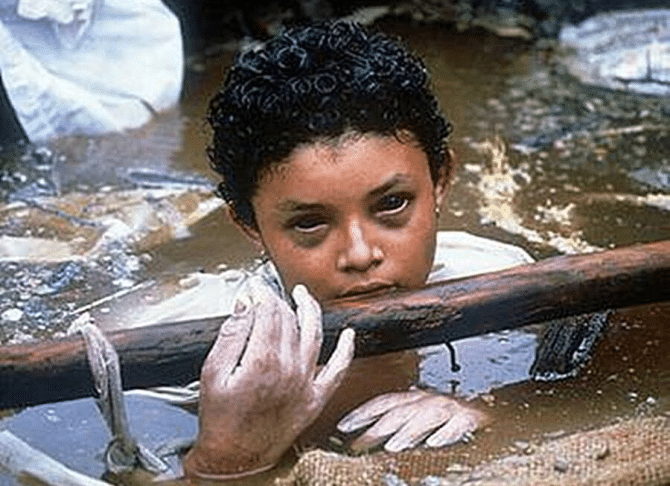In November 1985, a natural disaster struck the small town of Armero, Colombia. The eruption of the Nevado del Ruiz volcano triggered a deadly mudflow, claiming over 25,000 lives. This is the 60-hour ordeal of 13-year-old Omayra, who was trapped in the volcanic mudflow, capturing the hearts of people worldwide.
The Eruption and Its Aftermath

The Nevado del Ruiz volcano, towering at 17,500 feet, had shown signs of activity since the 1840s. By September 1985, the tremors grew more concerning, though authorities reassured residents there was no immediate danger. However, on November 13, 1985, the volcano erupted, melting the ice cap on the Arenas Crater and unleashing a massive lahar. The mudflow, moving at 25 mph, engulfed Armero in minutes, covering 85% of the city in thick mud.
Omayra Sánchez’s Ordeal
Omayra Sánchez was at home when the lahar destroyed her house. Trapped beneath the rubble, she was submerged up to her neck in mud and debris. Despite the efforts of rescuers and journalists who quickly gathered around her, her legs were pinned under the remains of her home, and they lacked the equipment needed to free her without risking fatal injury.
For three agonizing days, Omayra remained trapped. Volunteers and Red Cross workers tried to make her as comfortable as possible. Divers attempting to rescue her found that moving the debris could further injure or kill her. Continuous rain worsened the situation, raising the water level and complicating the rescue.
Her Final Hours

Photographer Frank Fournier documented Omayra’s final moments. His haunting photos of the young girl drifting between consciousness and unconsciousness captured her unimaginable suffering. Throughout her ordeal, Omayra spoke with a remarkable calm, expressing concern about missing school and her family. As her condition deteriorated, she began to hallucinate, imagining she had to take a math test.
In her final moments, Omayra expressed heart-wrenching messages of love to her family: “Mommy, I love you so much, Daddy, I love you, brother, I love you.” After being trapped for more than 60 hours, Omayra died on November 16, 1985.
Legacy and Memorials
Armero today stands as a somber reminder of the tragedy. The town remains largely deserted, with only ruins and a few memorials marking its former location. Every year on November 13, a ceremony is held to honor the victims, with helicopters dropping flowers over the site. Omayra Sánchez’s grave has become a pilgrimage destination, where visitors leave tokens and notes, often viewing her as a saint-like figure. Survivors of the disaster, such as Alma Landinez and Olga Villalobos, continue to recount their stories, ensuring the memory of the tragedy and its victims is kept alive.
Conclusion
Omayra Sánchez’s story serves as a powerful reminder of the catastrophic force of natural disasters and the critical need for effective disaster preparedness. Her bravery and grace in the face of overwhelming suffering moved hearts across the globe, cementing her as a lasting symbol of the Armero disaster. As we honor Omayra and the thousands who lost their lives, we must work toward preventing such tragedies in the future through improved planning, resources, and international collaboration.
